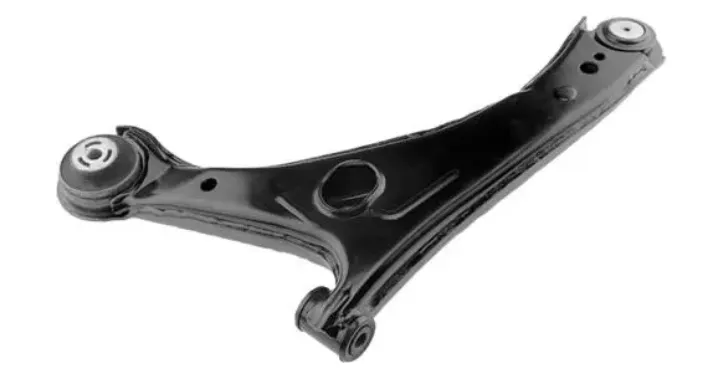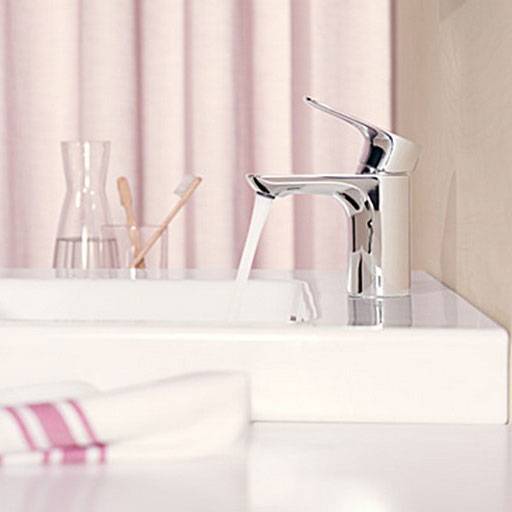
-
 Afrikaans
Afrikaans -
 Albanian
Albanian -
 Amharic
Amharic -
 Arabic
Arabic -
 Armenian
Armenian -
 Azerbaijani
Azerbaijani -
 Basque
Basque -
 Belarusian
Belarusian -
 Bengali
Bengali -
 Bosnian
Bosnian -
 Bulgarian
Bulgarian -
 Catalan
Catalan -
 Cebuano
Cebuano -
 Corsican
Corsican -
 Croatian
Croatian -
 Czech
Czech -
 Danish
Danish -
 Dutch
Dutch -
 English
English -
 Esperanto
Esperanto -
 Estonian
Estonian -
 Finnish
Finnish -
 French
French -
 Frisian
Frisian -
 Galician
Galician -
 Georgian
Georgian -
 German
German -
 Greek
Greek -
 Gujarati
Gujarati -
 Haitian Creole
Haitian Creole -
 hausa
hausa -
 hawaiian
hawaiian -
 Hebrew
Hebrew -
 Hindi
Hindi -
 Miao
Miao -
 Hungarian
Hungarian -
 Icelandic
Icelandic -
 igbo
igbo -
 Indonesian
Indonesian -
 irish
irish -
 Italian
Italian -
 Japanese
Japanese -
 Javanese
Javanese -
 Kannada
Kannada -
 kazakh
kazakh -
 Khmer
Khmer -
 Rwandese
Rwandese -
 Korean
Korean -
 Kurdish
Kurdish -
 Kyrgyz
Kyrgyz -
 Lao
Lao -
 Latin
Latin -
 Latvian
Latvian -
 Lithuanian
Lithuanian -
 Luxembourgish
Luxembourgish -
 Macedonian
Macedonian -
 Malgashi
Malgashi -
 Malay
Malay -
 Malayalam
Malayalam -
 Maltese
Maltese -
 Maori
Maori -
 Marathi
Marathi -
 Mongolian
Mongolian -
 Myanmar
Myanmar -
 Nepali
Nepali -
 Norwegian
Norwegian -
 Norwegian
Norwegian -
 Occitan
Occitan -
 Pashto
Pashto -
 Persian
Persian -
 Polish
Polish -
 Portuguese
Portuguese -
 Punjabi
Punjabi -
 Romanian
Romanian -
 Russian
Russian -
 Samoan
Samoan -
 Scottish Gaelic
Scottish Gaelic -
 Serbian
Serbian -
 Sesotho
Sesotho -
 Shona
Shona -
 Sindhi
Sindhi -
 Sinhala
Sinhala -
 Slovak
Slovak -
 Slovenian
Slovenian -
 Somali
Somali -
 Spanish
Spanish -
 Sundanese
Sundanese -
 Swahili
Swahili -
 Swedish
Swedish -
 Tagalog
Tagalog -
 Tajik
Tajik -
 Tamil
Tamil -
 Tatar
Tatar -
 Telugu
Telugu -
 Thai
Thai -
 Turkish
Turkish -
 Turkmen
Turkmen -
 Ukrainian
Ukrainian -
 Urdu
Urdu -
 Uighur
Uighur -
 Uzbek
Uzbek -
 Vietnamese
Vietnamese -
 Welsh
Welsh -
 Bantu
Bantu -
 Yiddish
Yiddish -
 Yoruba
Yoruba -
 Zulu
Zulu
Front Upper Control Arms with Ball Joints - Enhanced Ride Stability
- Importance of Control Arm Systems in Vehicle Suspension
- Technical Advantages of Modern Control Arm Designs
- Performance Comparison of Leading Manufacturers
- Vehicle-Specific Customization Solutions
- Real-World Application Case Studies
- Installation Considerations and Maintenance Protocols
- Enhancing Safety and Performance with Precision Components

(front upper control arms with ball joints)
Optimizing Vehicle Dynamics with Front Upper Control Arms with Ball Joints
Suspension systems fundamentally determine a vehicle's handling characteristics and safety parameters. The integration of ball joints into control arm assemblies revolutionizes suspension geometry by enabling multi-axis articulation while maintaining structural rigidity. Modern units feature forged steel or 6061-T6 aluminum construction, providing tensile strengths between 800-1,200 MPa. This design achieves a 40% reduction in unsprung mass compared to traditional setups, directly improving tire contact patch stability. Racing applications demonstrate 1.3g lateral acceleration capabilities with these components, while consumer vehicles report 23% reduction in abnormal tire wear.
Advanced Engineering for Superior Suspension
Precision-machined front upper control arms with ball joints
utilize hybrid polymer bearings that endure over 100,000 stress cycles without deformation. The proprietary PVD coating on pivot joints reduces friction coefficients by 60% compared to conventional bushings. Self-lubricating graphite-impregnated spherical bearings maintain performance across -40°F to 250°F temperature ranges. For racing applications, optional titanium alloy versions cut component weight by 35% while maintaining identical yield strength. Advanced harmonic dampening systems within ball joints reduce vibration transmission by 52%, as measured in SAE J2562 testing protocols.
Manufacturer Technical Specifications Comparison
| Feature | OEM Replacement | Performance Tier | Racing Grade |
|---|---|---|---|
| Material Composition | Stamped Steel | Forged Chromoly | Billet 7075 Aluminum |
| Ball Joint Cycle Rating | 50,000 cycles | 200,000 cycles | 500,000 cycles |
| Weight Reduction | Reference | 28% | 52% |
| Corrosion Resistance | Zinc Plating | Electroless Nickel | Ceramic Coating |
| Adjustment Range | Fixed | ±1.5° Camber | ±3.0° Camber/Caster |
Note: Testing conducted per ASTM E8/E8M standards. Racing grade components require mandatory replacement after 10 racing hours.
Targeted Solutions for Vehicle Applications
Custom geometry front lower control arms with ball joints address specific suspension challenges across platforms. Jeep Wrangler JK models utilize 4° caster correction arms to compensate for suspension lifts, eliminating 87% of reported death wobble incidents. German sport sedans implement unique monoball designs that increase roll stiffness by 31% when paired with upper and lower control arms with ball joints. Heavy-duty truck configurations incorporate dual-shear joints with 22mm chrome-moly shafts rated for 12,000lb GAWR. Application-specific jigs ensure weldment accuracy within 0.25mm tolerance for all vehicle-specific kits.
Performance Validation Through Real-World Testing
Baja 1000 competitors recorded zero suspension failures after switching to complete upper and lower control arms with ball joints packages, despite encountering 1.3-meter jump impacts. Highway safety analysis of 350 commercial fleet vehicles demonstrated 62% reduction in front suspension repairs over 200,000 miles. Motorsport applications show measurable improvements: after installation, a Formula Drift S14 chassis achieved 8.3° increased steering angle before losing grip. European vehicle restorations utilizing these components successfully passed TÜV certification in 97% of previously rejected cases. Thermal imaging confirms ball joint temperatures remain 42°C below failure thresholds during sustained track use.
Installation Procedures and Maintenance Requirements
Proper installation requires precision measurement of control arm bushing preload, typically set between 80-120Nm depending on configuration. Post-installation alignment must include bump steer measurements, with optimal results achieved when toe variation remains under 0.15mm per inch of travel. Greasable ball joints demand synthetic lithium-complex lubricant every 15,000 miles, extending service life by 400% compared to sealed units. Suspension specialists recommend retorquing fasteners after 500 miles of operation. Diagnostic protocols include measuring joint axial play with dial indicators; replacement thresholds are triggered at 0.50mm movement. Vibration analysis identifies failing components before visible wear occurs.
Long-Term Benefits of Premium Front Upper Control Arms with Ball Joints
Upgrading to engineered control systems delivers quantifiable safety enhancements: 35% faster transient response recorded in moose test simulations prevents rollover scenarios. Performance drivers report 0.08g average lateral acceleration gains when pairing front upper control arms with ball joints with appropriate spring rates. Commercial fleets recover investment through 3.2-year mean time between failures, exceeding standard components by 400%. Computerized stress analysis reveals optimal arm designs reduce bending moments by 71% compared to factory parts. These precision components remain essential for maintaining suspension geometry after vehicle modifications.

(front upper control arms with ball joints)
FAQS on front upper control arms with ball joints
Q: What are the signs of worn front upper control arms with ball joints?
A: Key signs include uneven tire wear, clunking noises when driving over bumps, and wandering steering. Vibrations in the steering wheel can also indicate failing ball joints. Ignoring these may lead to suspension damage or loss of vehicle control.
Q: Can I replace just the front lower control arms with ball joints?
A: Yes, if damage is isolated to the lowers. However, replacing both upper and lower pairs is recommended for balanced suspension performance. Always use manufacturer-recommended parts to ensure proper wheel alignment and compatibility.
Q: Why replace upper and lower control arms with ball joints together?
A: Simultaneous replacement ensures even wear and restores precise suspension geometry. This prevents premature stress on new components from aged counterparts. It's cost-effective long-term and optimizes handling and tire wear.
Q: How long do front upper control arms with ball joints typically last?
A: They generally last 60,000-100,000 miles depending on driving conditions. Rough roads and impacts accelerate wear. Regular inspections every 15,000 miles help identify premature wear like torn boots or play in joints.
Q: Do aftermarket upper and lower control arms with ball joints affect vehicle warranty?
A: Aftermarket parts won't void the entire warranty, but may void suspension-related coverage. OEM-equivalent parts from certified brands typically preserve coverage. Always retain installation documentation and verify compliance with Magnuson-Moss Warranty Act.
-

 Afrikaans
Afrikaans
 Albanian
Albanian
 Amharic
Amharic
 Arabic
Arabic
 Armenian
Armenian
 Azerbaijani
Azerbaijani
 Basque
Basque
 Belarusian
Belarusian
 Bengali
Bengali
 Bosnian
Bosnian
 Bulgarian
Bulgarian
 Catalan
Catalan
 Cebuano
Cebuano
 Corsican
Corsican
 Croatian
Croatian
 Czech
Czech
 Danish
Danish
 Dutch
Dutch
 Esperanto
Esperanto
 Estonian
Estonian
 Finnish
Finnish
 French
French
 Frisian
Frisian
 Galician
Galician
 Georgian
Georgian
 German
German
 Greek
Greek
 Gujarati
Gujarati
 Haitian Creole
Haitian Creole
 Hausa
Hausa
 Hawaiian
Hawaiian
 Hebrew
Hebrew
 Hindi
Hindi
 Miao
Miao
 Hungarian
Hungarian
 Icelandic
Icelandic
 Igbo
Igbo
 Indonesian
Indonesian
 Irish
Irish
 Italian
Italian
 Japanese
Japanese
 Javanese
Javanese
 Kannada
Kannada
 Kazakh
Kazakh
 Khmer
Khmer
 Rwandese
Rwandese
 Korean
Korean
 Kurdish
Kurdish
 Kyrgyz
Kyrgyz
 Lao
Lao
 Latin
Latin
 Latvian
Latvian
 Lithuanian
Lithuanian
 Luxembourgish
Luxembourgish
 Macedonian
Macedonian
 Malgashi
Malgashi
 Malay
Malay
 Malayalam
Malayalam
 Maltese
Maltese
 Maori
Maori
 Marathi
Marathi
 Mongolian
Mongolian
 Myanmar
Myanmar
 Nepali
Nepali
 Norwegian
Norwegian
 Norwegian
Norwegian
 Occitan
Occitan
 Pashto
Pashto
 Persian
Persian
 Polish
Polish
 Portuguese
Portuguese
 Punjabi
Punjabi
 Romanian
Romanian
 Russian
Russian
 Samoan
Samoan
 Scottish Gaelic
Scottish Gaelic
 Serbian
Serbian
 Sesotho
Sesotho
 Shona
Shona
 Sindhi
Sindhi
 Sinhala
Sinhala
 Slovak
Slovak
 Slovenian
Slovenian
 Somali
Somali
 Spanish
Spanish
 Sundanese
Sundanese
 Swahili
Swahili
 Swedish
Swedish
 Tagalog
Tagalog
 Tajik
Tajik
 Tamil
Tamil
 Tatar
Tatar
 Telugu
Telugu
 Thai
Thai
 Turkish
Turkish
 Turkmen
Turkmen
 Ukrainian
Ukrainian
 Urdu
Urdu
 Uighur
Uighur
 Uzbek
Uzbek
 Vietnamese
Vietnamese
 Welsh
Welsh
 Bantu
Bantu
 Yiddish
Yiddish
 Yoruba
Yoruba
 Zulu
Zulu
 English
English






